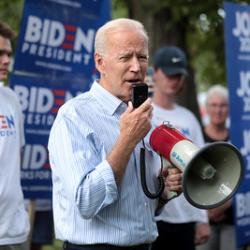Asked whether he would be willing to appoint Muslims to his cabinet, Mitt Romney responded as follows:
“Based on the numbers of American Muslims [as a percentage] in our population, I cannot see that a cabinet position would be justified. But of course, I would imagine that Muslims could serve at lower levels of my administration…”
What a peculiar answer. If you replace “Muslims” with “Jews” above, how would that sound? For indeed, Jews and Muslims both account for about 1 percent of the population. More bizarrely, Romney’s own Mormon church is not exactly large. But let’s set aside the fact that Romney appears to rule himself out of his own cabinet for a minute. The key point to take away from this exchange is that it remains acceptable to target Muslims in a way that would not be possible with other religions.
If you can bare to look at the right-wing blogs, you will see that the anti-Islamic frenzy whipped up over the past few years shows no sign of abating. The paranoia has even infected Congress. As Paul Lauritzen notes, the founder of the “Anti-Terrorism Caucus” (boasting 118 members) believes that “radical Islamists” are infiltrating key American institutions, bent on imposing sharia law in the United States. Many have noted that the US does not have a problem with home-grown Islamic terrorism (it does have a problem with home-grown Christian terrorism, as Oklahoma City shows clearly). The reason is that Muslims in the United States are far more integrated in society, less marginalized, and actually wealthier than the average American. At the same time, their religion and their right to practice it are respected. This is one area where the US comes out ahead of Europe. And yet, if we follow the guidance of the anti-Islamic right, we would only be paving the way for the kind of isolation and marginalization that breeds terrorism. Sounds eerily familiar, doesn’t it?












